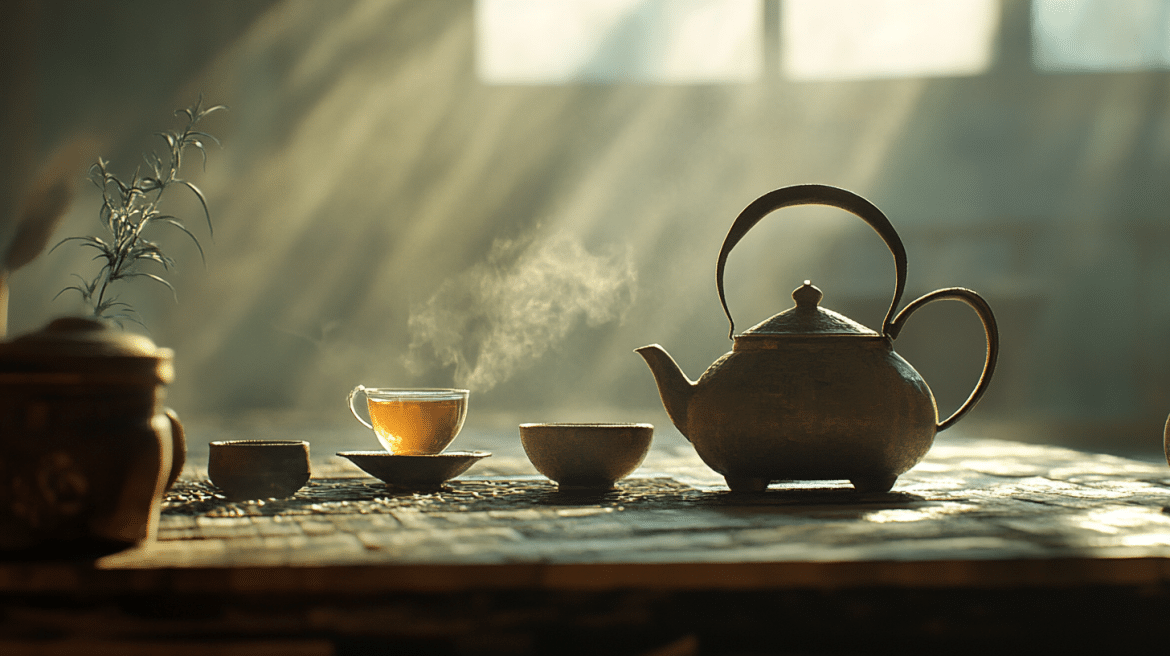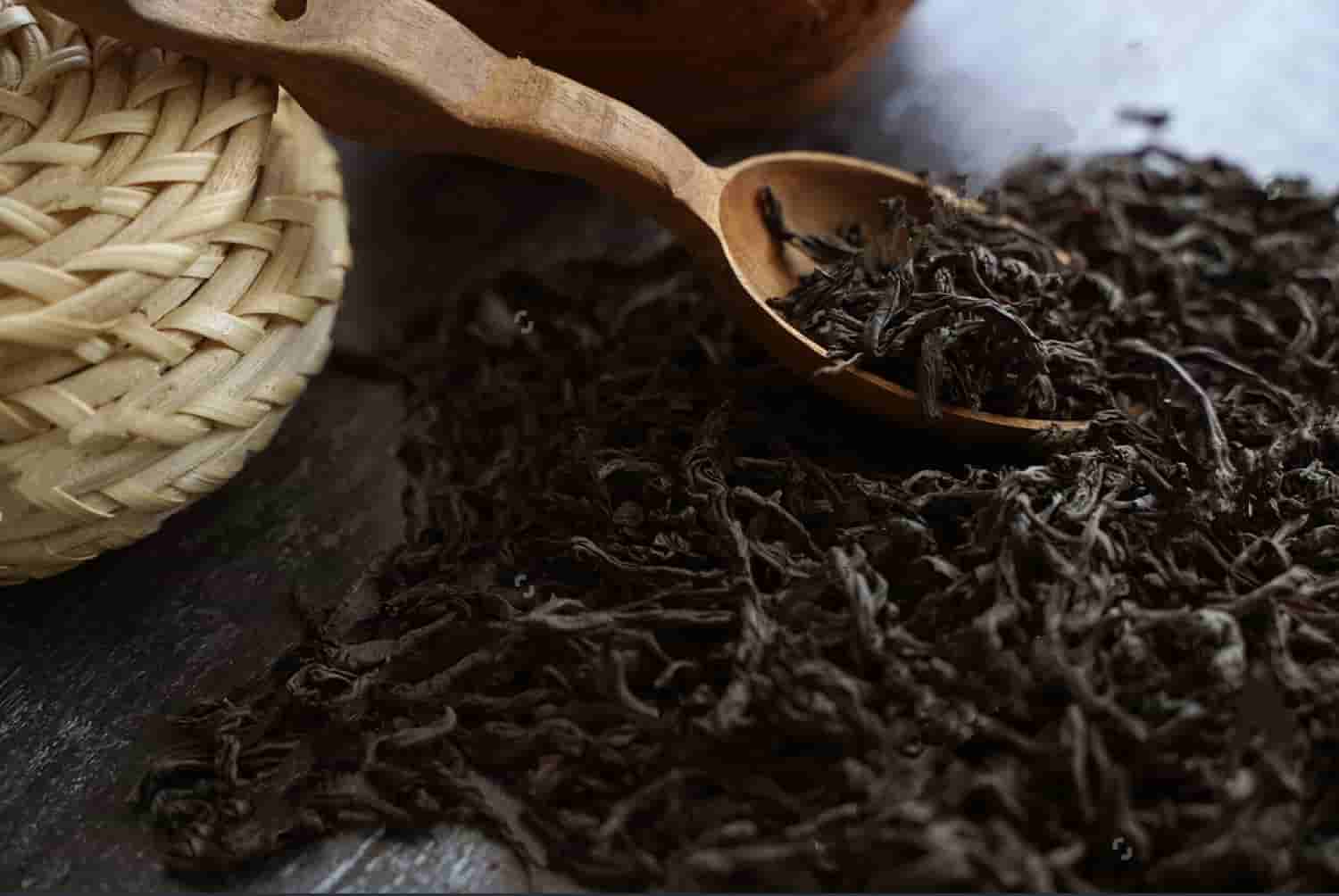In 1595, a Dutch navigator named Jan Hugo van Lin-Schooten published an account of his travels to Japan, including descriptions of the Japanese tea ceremony and the beautiful tea sets they used. As a direct result of Lin-Schooten’s book, the Dutch set up a trading station for Oriental goods on Java, and by 1602 more than sixty ships had made the voyage to and fro. So it was that in 1610 the first shipments of tea arrived in Europe via Dutch sailing ships.
Before the seventeenth century, tea could be found in Europe only at court or in the homes of aristocrats. But that all changed in 1657 when, for the first time, tea was served to the English public at Garraway’s Coffee House in London. Thomas Garraway, the proprietor, posted a sign listing the virtues of his establishment’s exciting new beverage, which was soon to become the national drink of the British Isles:
It maketh the body active and lusty.
It helpeth the Headache, giddiness and heavyness thereof.
It removeth the obstructions of the Spleen.
It is very good against the Stone and Gravel, cleaning the kidneys and Uriters, being drank with Virgins Honey instead of Sugar.
It taketh away the difficulty of breathing, opening obstructions.
It vanquisheth heavy dreams, easeth the Brain and strengtheneth the Memory.
Russia got into the act at the end of the seventeenth century by opening trade with China for tea and tea sets. Caravans of 200-300 camels carrying four chests of tea apiece crossed the great Gobi desert, trudged through Mongolia, then proceeded all the way across the endless Russian plains before reaching their destination. At a camel’s leisurely pace, a round trip took about three years!
Until 1689, all of England’s tea was supplied by the Dutch. But as the demand became more widespread, England decided to get into the tea-importing business herself. The East India Company (which had been formed in 1600 in response to a steep rise in the Dutch price of pepper)began to import tea directly from China.
Their ships, heavily armed to guard against pirates, set sail on the long and difficult voyage from London to China. In spite of the fact that it took an entire year to make the round trip, and despite the many ships lost at sea, the East India Company was able to monopolize England’s tea trade with China for almost 150 years.
During the seventeenth century, tea was introduced to just about every country in the West. Although at first it was eagerly embraced by all, the novelty wore off rather quickly for some nations. Germany, for example, had its fling with tea and then returned to its old favorite, beer.
France quickly bypassed tea in favor of wine and coffee, as did Portugal and Spain. But Russia was never fickle. To this day, she continues her love affair with tea, probably because she shares a common border with China and has many tea plantations herself. And in Great Britain, of course, tea has become absolutely indispensable and is a vital part of the national culture.
Tea was also highly popular in the American colonies during the seventeenth and eighteenth centuries; that is, until Britain levied a stringent tea tax. The incensed Colonists expressed their disapproval by tossing chests of tea over the sides of English ships and into Boston Harbor during what became known as the Boston Tea Party. From that point on, two trends were firmly set in motion; the move toward American independence and the move toward adopting coffee as the national drink.
Although coffee became the beverage of choice in the United States, many people still had an affinity for tea. Rather than deal with the British, however, the United States decided to enter the business of importing tea herself. Through the early 1800s, tea was still brought back from China on huge, full-bodied frigates that took forever to make the trip. But in 1841, the United States, demonstrating the ingenuity that was so typical of this young, fledgling country, came up with its own contribution to the tea importation business- the clipper ship.
With its narrow, knife like form and concave bow, the clipper ships could slice cleanly through the water and make the trip to and from China in nearly half the time! These ships caught on quickly, not only with tea companies in their native America, but with companies in Europe as well.
Soon, even faster ships that could hold more than a million pounds of tea were put to use. The clipper ships could make it from China to London in just four months. This was especially important because in England (still the largest market for tea), the spring flush brought in the most money and reportedly made the finest and most delicious tea.
To give the ship captains extra incentive, tea companies bestowed handsome rewards on the first to deliver this batch. A great competition sprang up among the captains of the clipper ships as they vied to be the first to bring in the new tea. Plucked at the end of April, the spring flush was usually processed, packed into the ships, and ready to sail by the end of May.
Then the race was on! The first mighty clipper ship to make it back to London was well rewarded and received a hero’s welcome from cheering throngs and hordes of newspaper reporters.
But the glamorous and glorious era of the clipper ships was to end abruptly in 1869 with the opening of the Suez Canal. Suddenly it was possible for steamer ships to make the trip to China in as little as forty-four days, making even the fastest clipper ships completely obsolete.
During the 1850s, China’s stranglehold on the tea trade began to fade. A similar kind of tea plant was discovered growing wild in India, and England began to develop her own tea plantations there. In 1887, for the first time Britain imported more tea from India and Ceylon than from China, a sign of the times. Just thirteen years later, in 1900, China’s exportation of tea had dropped dramatically. She would never be able to regain her prominence in the tea exportation business.
The Discovery of Tea in India
In 1823, the English Major Robert Bruce, who was stationed in the Indian province of Assam was given a hot cup of brew by some local natives. It was a drink they had made from the dried leaves of some nearby plants. Thinking that the drink tasted quite a bit like tea, Major Bruce asked to see the plants, and was surprised to discover tea trees growing wild.
Bruce sent samples of the trees to the Botanical Gardens in Calcutta, where they were classified as plants from the same family as Chinese teas (Camellia), but a different species (assamica, rather than sinensis). Amazingly, the discovery was then ignored for the next nine years.
In 1832, Lieutenant Charlton of the Assam Light Infantry made a similar discovery, finding wild tea plants growing near his barracks. He also sent samples to the
Botanical Gardens in Calcutta, but this time the East India Company got wind of the discovery. The tea company had been trying to find a way to grow tea some where within the British Empire so they wouldn’t have to import it from any other country. Understandably, they preferred to be their own supplier of tea, possibly even selling it to others. India was the obvious choice for tea cultivation, since it was part of the British Empire and was home to acres of undeveloped land.
The East India Company had everything they needed to grow and sell tea – except the tea plants themselves. Lieutenant Charlton’s find proved that tea, or tea like plants, could grow in India. Of course, they wanted “real” tea, which to them meant tea from China. So early in 1834, the East India Company sent their secretary, G. J. Gordon, to China to steal the seeds of tea plants. He also had orders to bring back some experienced tea makers that could teach the naive British tea growers how to cultivate the plants and process the leaves for the manufacture of tea.
After several harrowing escapes, Gordon sent about 80,000 seeds back to India, from which 42,000 plants were germinated. Most of the plants died but a few took root, especially in the Assam area.
Seed from both the Chinese plants and the indigenous Indian tea plants were eventually sent to other areas of India, to Ceylon, Java, Sumatra, and even to Russia, where tea cultivation was established in Georgia.


